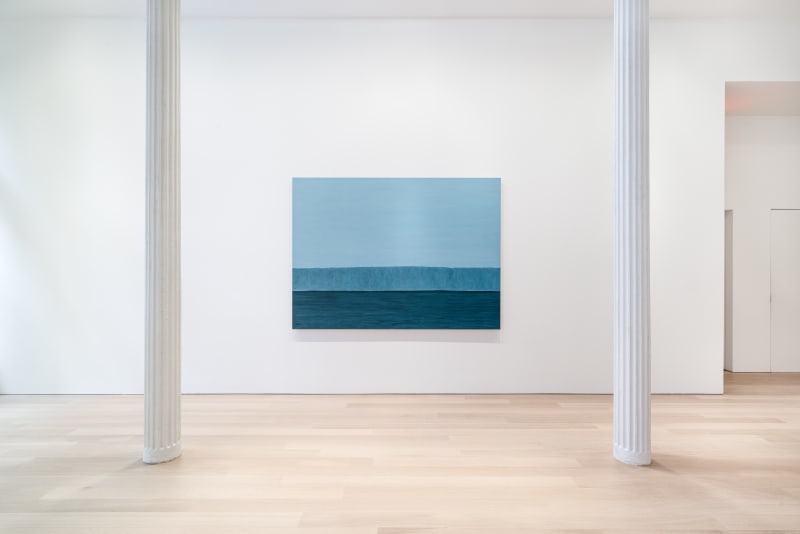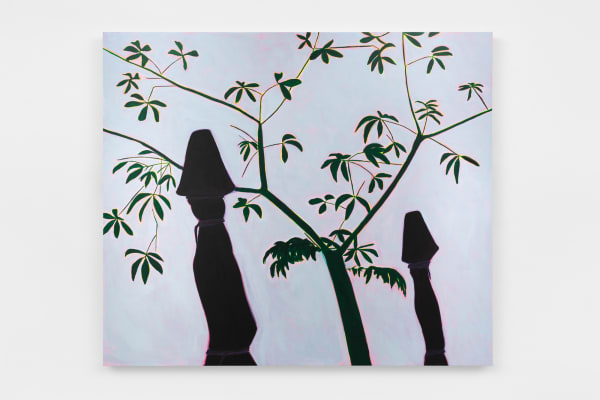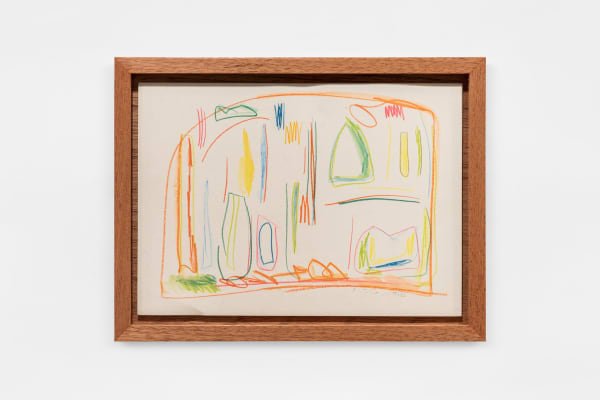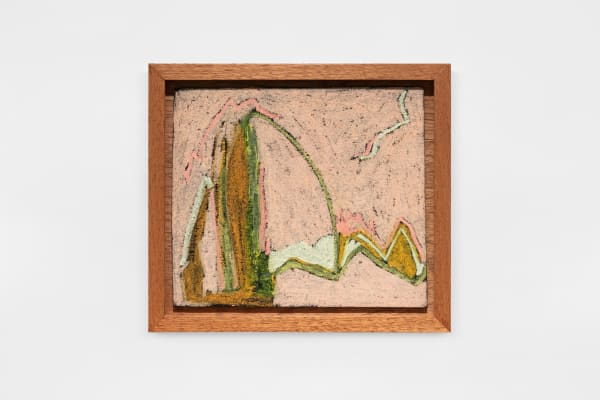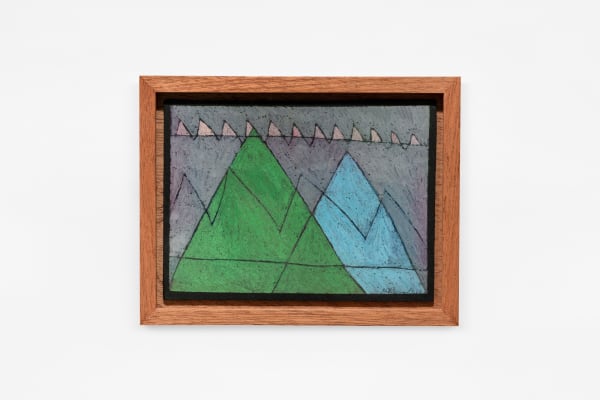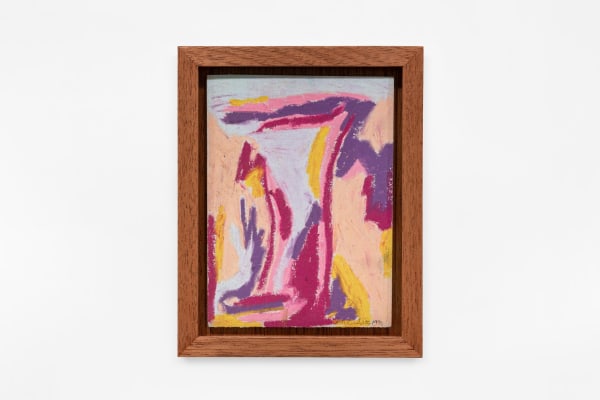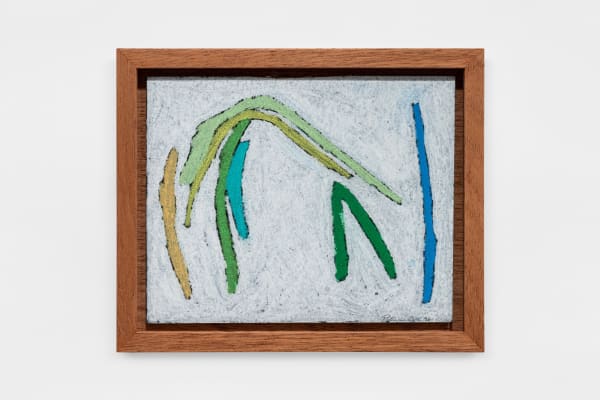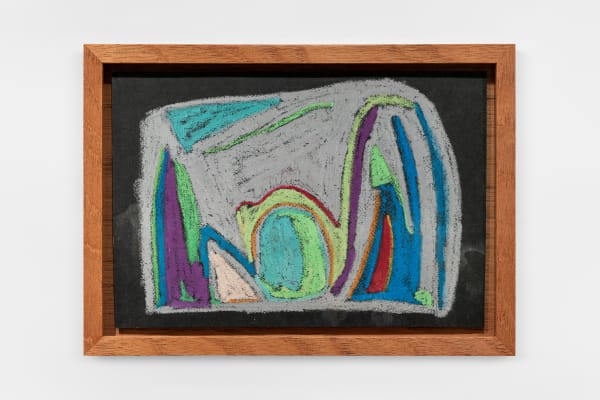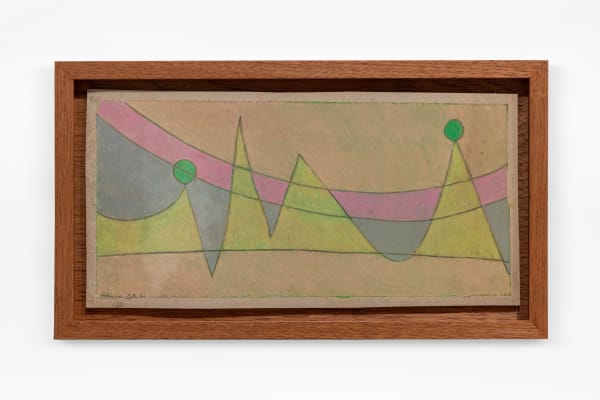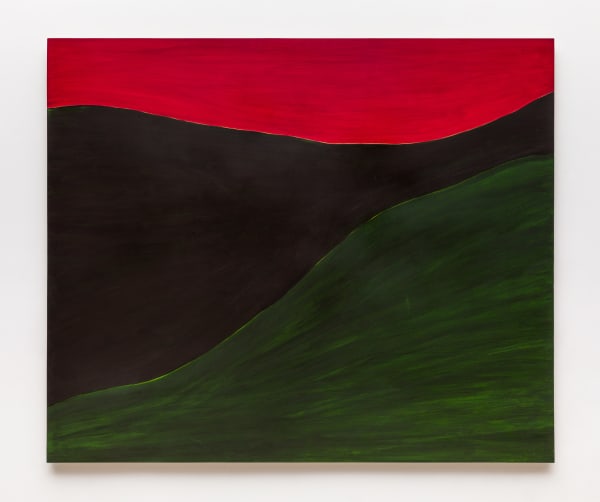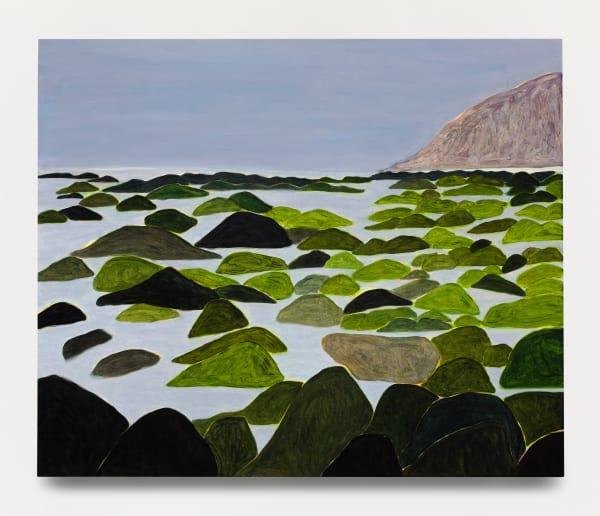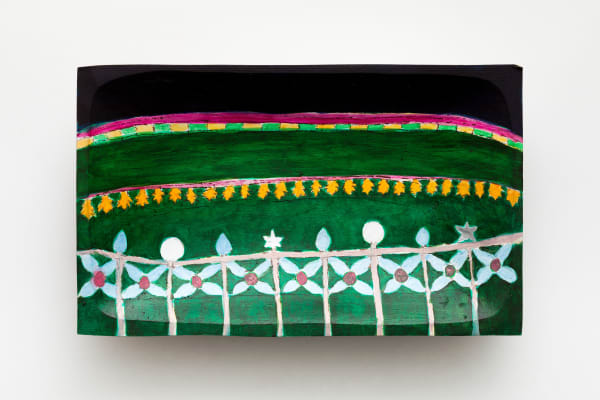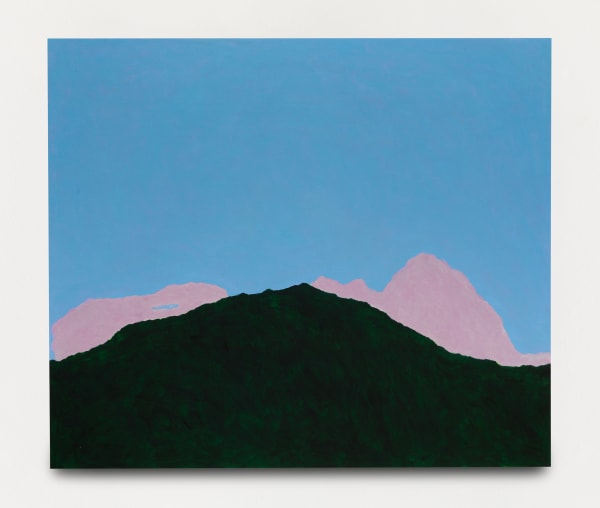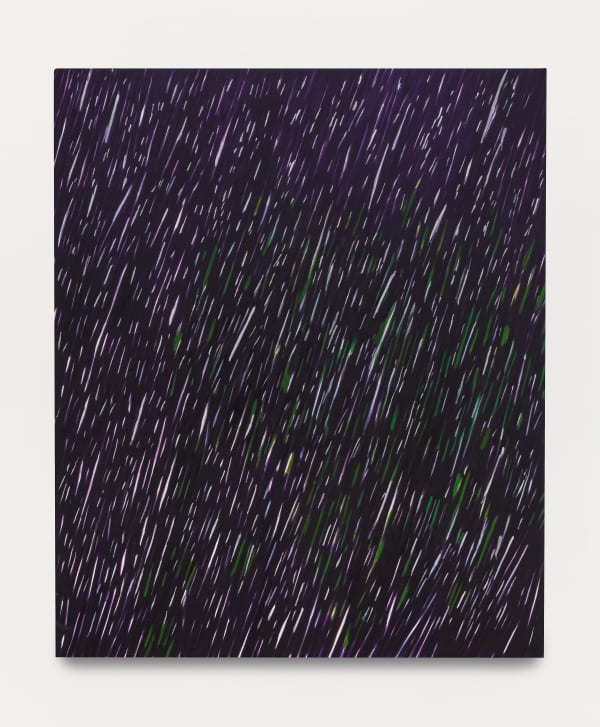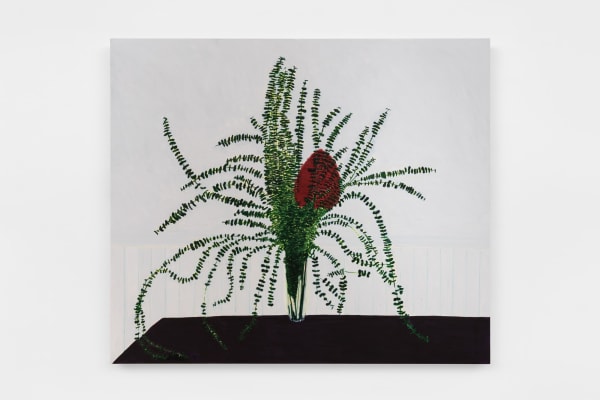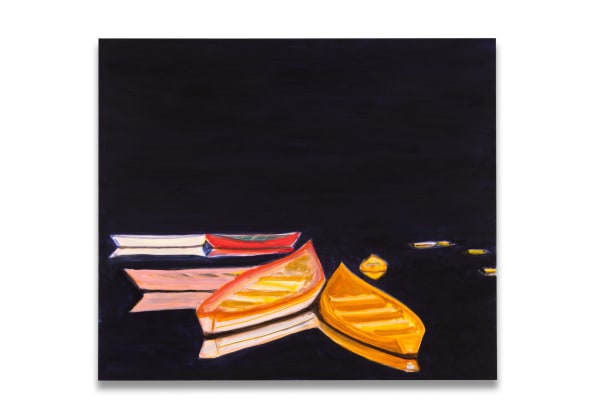Mantiqueira Patricia Leite
Jul 14 - Aug 12, 2022
Mantiqueira is a mountain range in Southern Brazil that forms a natural border separating Minas Gerais from the states of São Paulo and Rio de Janeiro. Its name derives from the indigenous Tupi language and translates to “mountains that cry,” a personification of the many rivers that pool and streak across the region’s face. In her painting of the same name, Patricia Leite foregoes any easy or obvious likeness to depict the landscape as a kind of wounded tone poem. Rather than carving out craggy peaks and plummeting valleys, Leite renders Mantiqueira (2022) as a geographic mass of immovable blue that progressively darkens from pale to bruised. Sandwiched between a saturated base of rushing water and a calm but mournful belt of open sky, the ridges of Mantiqueira’s cliffside form an imperfect line on the horizon that transforms Leite’s field of color into a distinct and recognizable landmass.
Without immediately knowing that Mantiqueira (2022) depicts a mountain range, you’d be forgiven for assuming it was pure abstraction; when I first saw it, it gave me the kind of holy, loaded pause I usually reserve for Mark Rothko. Images on Google Maps confirm that on an overcast day even the brightest hills in the area can take on a subtle bluish hue, but this literal-mindedness can’t account for the region’s physical geography, which is as jagged and skyscraping as Leite’s painting is segmented and smooth. This is the challenge and reward of Leite’s art, to square the hard facts of place with the ample room for interpretation that she generously reserves for her audience. Considering the work of translators, the critic Judith Thurman wrote a “literal transcription [never] produce[s] the most desirable result: it refuses the risks—the deep adventure—of the poetry.” In the same spirit, Leite ushers her viewer into weirder territory than the physical world immediately before them, steeping her work in a profound sense of place while insisting on an elusive, poetic beauty just beyond it.
The place in question for Leite is her home state of Minas Gerais, a region of Brazil with a more modest reputation than its mega city neighbors but with an equally inventive modernist tradition. Like most of Latin America, Brazil’s modernism was defined by embracing readymade currents of irrational dreaming that Freud had to invent a whole science to uncover. From antropofágo to tropicália, the creative mission for many Brazilian artists has been to splice the academic and classic with the indigenous, to disrupt the systematized thinking of rigid Germans and doctrinaireFrench in favor of creative strategies more open to sensation and magical thinking. In Leite’s work one can trace the whole lineage of Brazilian modernity from the riotous color studies of Iberê Camargo to the pastoral surrealism of Amadeo Luciano Lorenzato to the loose-limbed neo-concretism of her former professor, Amílcar De Castro.
Leite’s own place in this lineage is more meditative than combustive, her art is more attuned to highlighting discreet moments of mystery than tearing them open with her inventiveness, a quality she shares with other international greats like Vija Celmins, Etel Adnan, and Luchita Hurtado. A painting like Véu da Noiva (2021) which features an iridescent waterfall cascading out of a dark jungle is heightened by the exposed underpainting that makes up the whitewater, a shimmering rip in the rainforest’s earthy drabness. Poço and Musgo (both 2022) which depict half-submerged rocks in a tidal pool are slathered with feverish brush strokes that impart a fuzzy tactility to the moss. Leite’s knack for the natural world is not without its stylish moments: the impossible red island set against a moonlit harbor in Ilha vermelha (2022) rivals René Magritte for its sudden intrusion of dazzling weirdness and even sort of looks like a pair of his lips.
To my mind though Leite’s most dazzling piece is Lamento (2022), a star-fall of green and white asteroids plummeting through a black and purple void. It’s a work that gives beautiful coherence to some of the greatest contradictions that painting can embody, stillness and movement, lightness and dark, enormity and profound cosmic smallness, and the sneaking irony that it takes a work of art to bring you back to nature.
—Harry Tafoya
Patricia Leite (b. 1955, Belo Horizonte, Brazil) lives and works in São Paulo.
Recent solo and group exhibitions include Unnatural Nature: Post-Pop Landscapes, Acquavella Galleries, New York, USA (2022); Caninana, Thomas Dane Gallery, London, UK (2021); Vamos chamar o vento, Mendes Wood DM, São Paulo, Brazil (2020); Patricia Leite, The Arts Club, London, UK (2020); Terra Trema, Thomas Dane, Naples, Italy (2019); and Mínimo, múltiplo, comum, Estação Pinacoteca, São Paulo, Brazil (2018).
-
 Patricia Leite
Patricia Leite -
 Patricia Leite
Patricia Leite -
 Patricia Leite
Patricia Leite -
 Patricia Leite
Patricia Leite -
 Patricia Leite
Patricia Leite -
 Patricia Leite
Patricia Leite -
 Patricia Leite
Patricia Leite -
 Patricia Leite
Patricia Leite -
 Patricia Leite
Patricia Leite -
 Patricia Leite
Patricia Leite -
 Patricia Leite
Patricia Leite -
 Patricia Leite
Patricia Leite -
 Patricia Leite
Patricia Leite -
 Patricia Leite
Patricia Leite -
 Patricia Leite
Patricia Leite -
 Patricia Leite
Patricia Leite -
 Patricia Leite
Patricia Leite -
 Patricia Leite
Patricia Leite -
 Patricia Leite
Patricia Leite -
 Patricia Leite
Patricia Leite -
 Patricia Leite
Patricia Leite -
 Patricia Leite
Patricia Leite
